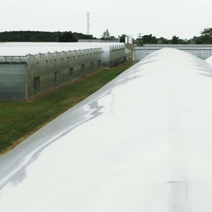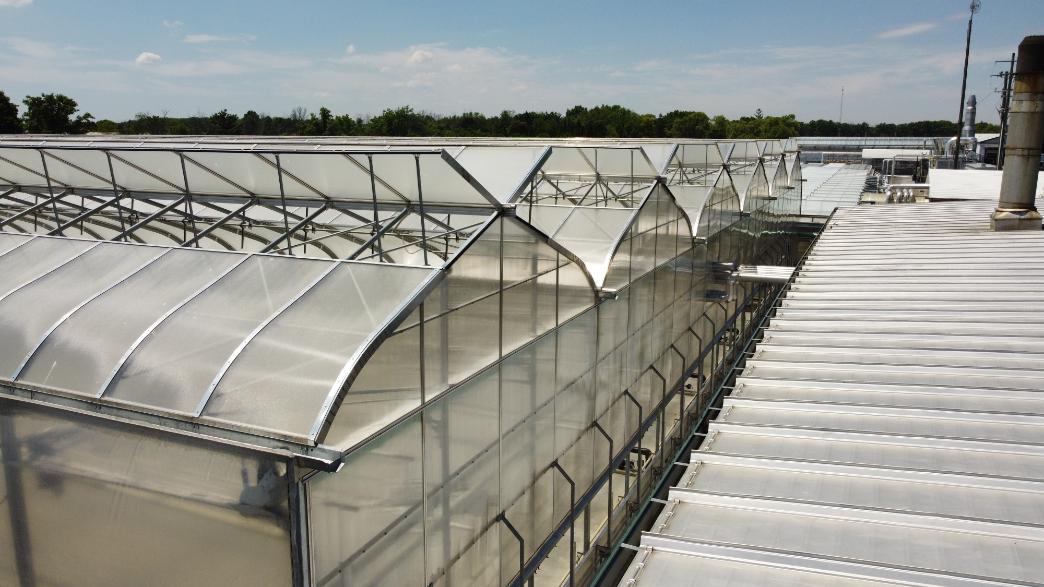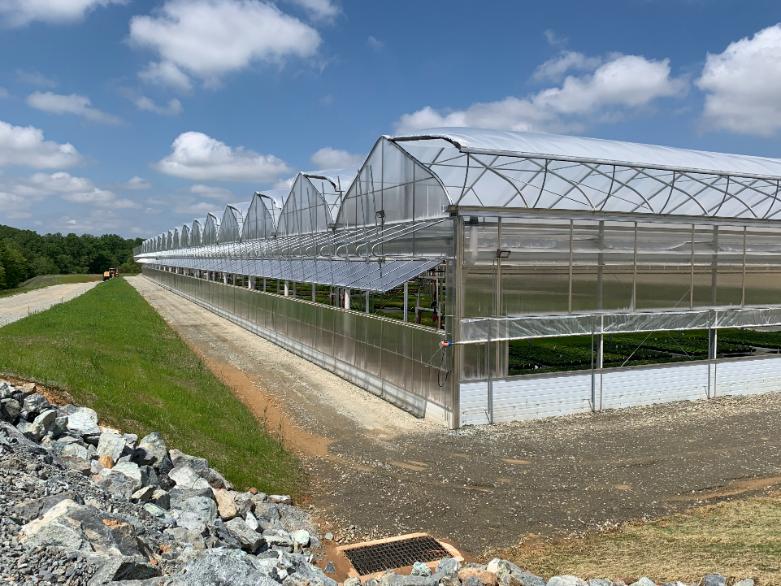6 Greenhouse Production Inefficiencies Eating Away Your Profits
Commercial growers are constantly challenged to improve production efficiencies on every possible angle. Competition is stiff, and growers must continually find ways to improve in order to remain competitive in their market. Saving even a fraction of a cent here and there goes a long way when you’re producing in high volume. Here are 6 of the most common production inefficiencies greenhouse growers face.
1. Relaxed Nutrient Management
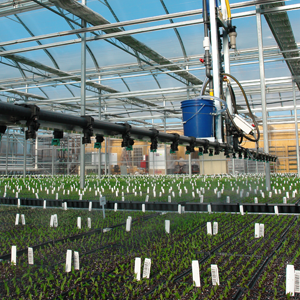
When it comes to yields, it’s too easy to make the assumption that “more food means more flower”. But is it that simple? From a horticultural perspective, delivering just the right amount of nutrients, at just the right time, will improve your crop’s nutrient use efficiency.
Fertilizer is not cheap, especially if you rely on premixed, or use a drain to waste style of production where you are unable to reclaim unused nutrients. Running a “lean” crop will not only save you from wasting nutrient solution, it will also improve the performance of your crop.
Tightening up on your nutrient management system means evaluating where your wastes are. A good fertigation management system can really add to the bottom line.
2. Improper Lighting
Lighting is essential, without light a plant won’t grow, and in greenhouses where natural light is in abundance, lighting is the most often overlooked component in a production plan. When considering the lighting needs for your plants it is important to look at when to and when not to provide light. Shading and blackout curtains are often used to reduce the amount of daytime light. Consider how your zones are divided to make sure you are balancing your crops light needs correctly. The type of glazing on your roof also effects light distribution and needs to be part of your light plans, as well your geographic region and seasonal changes will also come into play.
Many commercial greenhouse growers are also looking at supplemental lighting to boost light levels when your crop needs it most. HPS lights are still generally the most economically feasible solutions but LED should not be ignored. Many vining fruit growers use LED inter-canopy lighting to boost fruit production.
In all cases selecting the right lights, putting them in the right position, and coordinating your day lengths will help substantially in managing your lighting bills.
I think we should also mention Photosynthetic Photon Flux Density (PPFD), as a standardized measurement when trying to meet crop specific light needs. Because PPF only focuses on photons which are active for photosynthesis, it helps growers quantify what they are delivering to their plants VS what their plants need. Of course the computer can calculate this, but growers still need to be aware so they don’t get the tunnel vision of “more light=more production=more profit”
3. Climate Control Mismanagement
In days gone by greenhouse growers sought to minimize the greenhouse height in order to reduce the cost of heating the perimeter. Today we realise that it is far easier to maintain a consistent temperature with a greater air volume. This enables commercial greenhouse manufacturers to design higher gutter heights, and using passive climate control: Shade/energy curtains, and natural ventilation taking advantage of convection to force hot, humid air out of your vents. Greenhouse heating systems have also come along way, and old boilers should be considered for replacement to take advantage of the efficiencies newer boilers offer. High efficiency condensing boilers can have a quick ROI as they can be up to 13% more efficient than the conventional fire tube style boiler. A good environmental control computer is essential if you want to maximize the efficiency of your climate control.
Growers also use their climate as the primary tool for shaping plant development. Mismanaging your greenhouse climate can make the crop develop in an undesirable way. This can lead to needing more crop labour to physically fix the problem, and it can lower the market value for your product. Either way, it’s costing you money.
We want to stress that energy is typically the biggest production cost in a commercial greenhouse, most of which goes into managing the climate. So inefficiencies here will substantially take away from the bottom line.
4. Inefficient Greenhouse Labour Management
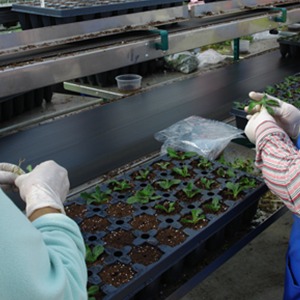 Labor is usually your second largest expense after energy, so not managing your workforce efficiently is a serious cost problem. Streamline production so your laborers can be efficient with their time. Track the amount of time it takes each laborer to complete each task and how many times someone touches a plant. This gives valuable insight to how long specific tasks should take to complete, who is efficient and who needs improvement, what component is the most labour intensive, and anticipate when extra labor may be required. This will help you trim the fat in production, and give you something measurable to decide when spending money on greenhouse automation is worthwhile or not.
Labor is usually your second largest expense after energy, so not managing your workforce efficiently is a serious cost problem. Streamline production so your laborers can be efficient with their time. Track the amount of time it takes each laborer to complete each task and how many times someone touches a plant. This gives valuable insight to how long specific tasks should take to complete, who is efficient and who needs improvement, what component is the most labour intensive, and anticipate when extra labor may be required. This will help you trim the fat in production, and give you something measurable to decide when spending money on greenhouse automation is worthwhile or not.
5. Wasted Greenhouse Production Space
Canopy space / total space = % space used for production. It is a simple formula to determine the percentage of floor space you are using for production. Remember your production space is what pays for all the other space, so it makes good sense to maximize one and minimize the other.
The best space savers in a greenhouse tend to be rolling benches where a single aisle can replace several aisles in a stationary bench layout. Or if your crop is grown on the ground, in-floor heating eliminates the need for aisles entirely. Tiered/stacked production has also seen a rise in experimentation, though this does not always lend itself to more production efficiency as material handling, irrigation, lighting all need to be adapted to a multi-level system.
Consider in your greenhouse design the space needed for the irrigation room, water, fertigation and other equipment storage. Is there a better layout for more efficient use of floor space? With drain to waste, drip, DWC, NFT, flood, aeroponic, do the results of production justify the extra space required for that style of growing?
Having said that you still need to have a working environment conducive to employee needs. How do employees and product get from place to place. Electric vehicles, bikes/scooters, carts, mobile racks, fork lifts, skid steers. Does it really increase production to maximize floor space if it means laborers must spend substantially more time to do their job? Sometimes, some empty space isn’t wasted if it allows for improved production.
6. Lax Greenhouse Maintenance
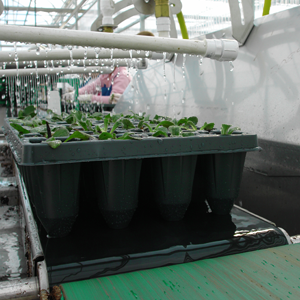 Regardless of your greenhouse design, or the technology you use, all of your equipment and growing systems if not properly maintained are inefficient. Heating, irrigation, venting, shading, greenhouse automation, forklifts, delivery trucks, all need to have a maintenance schedule.
Regardless of your greenhouse design, or the technology you use, all of your equipment and growing systems if not properly maintained are inefficient. Heating, irrigation, venting, shading, greenhouse automation, forklifts, delivery trucks, all need to have a maintenance schedule.
Proper maintenance reduces downtime by fixing little problems before they become big ones. A proper maintenance log will also help you identify when spending money on maintenance would be better spent to upgrade a piece of equipment.
Even when you adhere to a maintenance schedule things can go wrong which is why having open eyes and ears are a growers most useful tool.
Train your senses to know when everything is working perfectly, so you can quickly sense when something is wrong. Catching a noisy vent motor early enables you to get a replacement before something fails and interrupts production.


